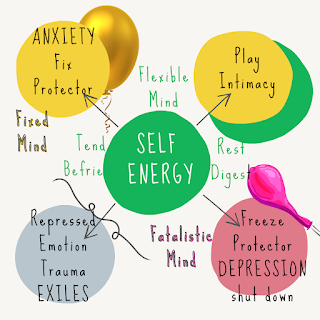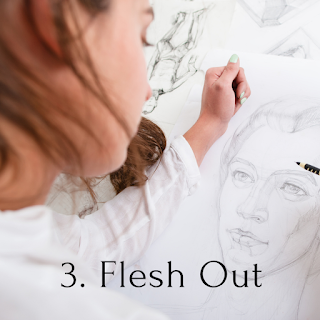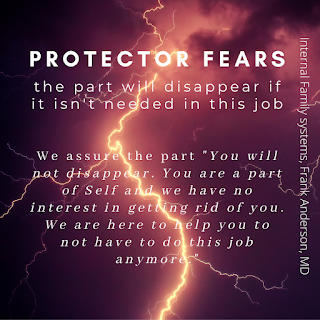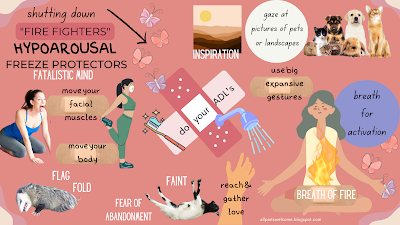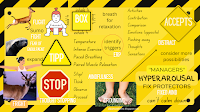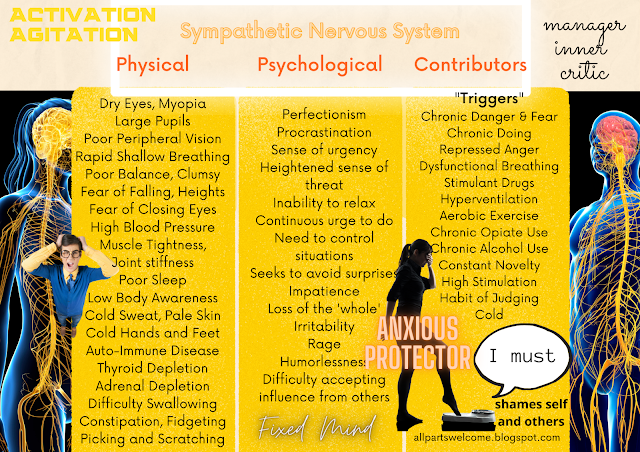The 6Fs:
The Steps We Use to Help Protective Parts Differentiate from the Self
The first three steps (find, focus, flesh out) involve helping parts to unblend.
- FIND the part in, on or around the body.
- Who needs your attention right now?
- Where do you notice it?
- FOCUS on it.
- Turn your attention inside.
- FLESH it out.
- Can you see it? If so, how does it look?
- If not, how do you experience it? What is that like?
- How close are you to it?
- How do you FEEL toward the part?
- This question is our Geiger Counter for Self-energy. Any answer that is not in the ballpark of the 8 C’s (The qualities of Self-energy: Curiosity, calm, clarity, connectedness, confidence, courage, creativity and compassion) means that a second part is influencing our thoughts. We ask this second part if it is willing to relax so we can talk to the target part. “If it is not willing to relax,” we ask it what it needs us to know. This process may lead us to a second (or third, fourth…) target part.
- Reactive parts often need to feel heard and validated. We stay with them until they are willing to let us get to know the target part.
- Once they agree, we ask the client, “How do you feel toward the (target) part now?”
- BeFRIEND the part by finding out more about it.
- The fifth step involves learning about the target part and developing a friendly relationship. This builds relationships internally (Self to part) and externally (part to therapist). “How did it get this job?” “How effective is the job?” “If it didn’t have to do this job, what would it rather do?” “How old is it?” “How old does it think you are?” “What else does it want you to know?”
- What does this part FEAR?
- “What does it want for you?”
- “What would happen if it stopped doing this job?”
See post on Protector Fears Frank Anderson on Protector Fears (allpartswelcome.blogspot.com)



